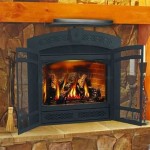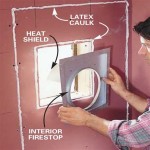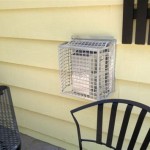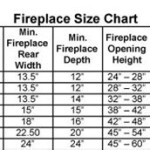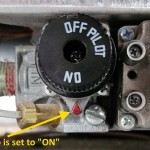```html
Slate Fireplace Mantel: A Timeless and Durable Choice
The fireplace serves as a focal point in many homes, providing warmth and ambiance. The mantel, positioned above the fireplace opening, plays a crucial role in enhancing the aesthetic appeal of this central feature. A slate fireplace mantel offers a unique combination of visual elegance, durability, and practicality, making it a popular choice for homeowners seeking a sophisticated and long-lasting addition to their living space. This article explores the characteristics, benefits, installation considerations, and maintenance requirements associated with slate fireplace mantels.
Understanding Slate as a Material
Slate is a fine-grained, metamorphic rock formed from the compression of sedimentary clay or volcanic ash. This process results in a dense and layered structure that imparts several desirable properties. Its primary constituents include minerals such as quartz, muscovite, illite, and chlorite. The specific mineral composition contributes to the variation in color and texture found in different types of slate. Colors range from dark grays and blacks to greens, purples, reds, and even copper tones, allowing for a diverse selection to complement various interior design styles.
One of slate’s defining characteristics is its natural cleft, which allows it to be easily split into thin, relatively flat sheets. This property makes it ideal for applications like roofing, flooring, and, importantly, fireplace mantels. The natural cleft often creates a slightly textured surface that adds character and visual interest. Unlike many other stones, it exhibits low porosity, meaning it absorbs very little water. This resistance to moisture makes slate highly resistant to staining and damage from spills, a key advantage for a fireplace mantel that may be exposed to soot and ash.
Furthermore, slate is known for its durability and longevity. It is resistant to scratching, chipping, and cracking, making it a robust material capable of withstanding the wear and tear associated with daily use. Properly maintained, a slate fireplace mantel can last for generations, providing a timeless and enduring element to a home.
Advantages of Choosing a Slate Fireplace Mantel
Selecting a slate fireplace mantel offers several advantages over alternative materials, including wood, marble, and concrete. These benefits stem from the inherent properties of slate, as well as its aesthetic versatility.
Durability and Longevity: As previously mentioned, slate's inherent durability is a significant advantage. Unlike wood, it is not susceptible to rot, insect infestation, or fire damage (though direct exposure to intense heat should still be avoided). Unlike marble, it is less prone to staining and etching from acidic substances. This longevity translates into a lower lifetime cost, as the mantel will require less frequent repair or replacement.
Aesthetic Versatility: Slate’s natural variation in color and texture allows it to complement a wide range of interior design styles. It can seamlessly integrate into both contemporary and traditional settings, adding a touch of sophistication and natural beauty. A sleek, honed slate mantel lends itself well to modern spaces, while a more rustic, cleft-faced slate mantel can enhance the character of a country-style or traditional home. The availability of different edge profiles (e.g., bullnose, beveled, squared) further contributes to its design flexibility.
Low Maintenance: Slate is relatively easy to maintain. Its low porosity makes it resistant to staining, and regular cleaning typically involves simply wiping the surface with a damp cloth. For more stubborn stains, a mild detergent can be used. Sealing the slate can further enhance its stain resistance, although it is not always necessary, depending on the type of slate and the level of exposure to potential staining agents. Unlike wood, it does not require periodic painting or staining.
Unique Character: Each piece of slate is unique, with its own distinct color variations, veining, and texture. This natural variation adds character and individuality to the fireplace mantel, creating a focal point that is truly one-of-a-kind. Unlike manufactured materials, slate offers a sense of authenticity and connection to the natural world.
Eco-Friendly Considerations: Slate is a natural material that is quarried from the earth. Compared to some manufactured materials, its production process has a relatively low environmental impact. It is also a sustainable material, as slate quarries can be responsibly managed to minimize environmental disruption. Furthermore, the long lifespan of a slate fireplace mantel reduces the need for frequent replacements, contributing to overall resource conservation.
Installation and Maintenance Considerations
Proper installation and maintenance are crucial for ensuring the longevity and aesthetic appeal of a slate fireplace mantel. While some homeowners may choose to undertake the installation as a DIY project, professional installation is generally recommended, particularly for larger or more complex mantels.
Installation: The installation process typically involves securing the slate mantel to the fireplace surround or wall using appropriate adhesives and mechanical fasteners. The weight of the slate must be taken into consideration, and the supporting structure must be adequate to bear the load. Before installation, it is essential to ensure that the fireplace surround is level and plumb. The slate mantel should be carefully measured and cut to the required dimensions. Grout or caulk may be used to fill any gaps between the mantel and the surrounding surfaces, creating a seamless and watertight seal.
The choice of adhesive is critical. It should be specifically designed for bonding stone and compatible with the type of material used for the fireplace surround or wall. Mechanical fasteners, such as screws or bolts, can provide additional support, particularly for heavier mantels. The fasteners should be concealed or finished to blend in with the surrounding surfaces.
Sealing (Optional): While slate is naturally water-resistant, sealing the surface can provide an extra layer of protection against staining and moisture damage. A penetrating sealer is typically recommended, as it will not alter the appearance of the slate while providing enhanced stain resistance. The sealer should be applied according to the manufacturer's instructions, and periodic reapplication may be necessary, depending on the product and the level of exposure to potential staining agents.
Cleaning: Regular cleaning is essential for maintaining the appearance of a slate fireplace mantel. A soft cloth or sponge and warm water are usually sufficient for removing dust and dirt. For more stubborn stains, a mild detergent can be used. Avoid using harsh chemicals or abrasive cleaners, as they can damage the surface of the slate. After cleaning, the mantel should be thoroughly dried to prevent water spots. A soft brush can be used to remove soot or ash buildup from the surface.
Heat Considerations: While slate is naturally heat-resistant, it is important to avoid direct exposure to excessive heat from the fireplace. Installing a heat shield or maintaining a safe distance between the firebox and the mantel can help prevent damage. Prolonged exposure to intense heat can potentially cause the slate to crack or discolor. It is also important to ensure that the mantel is properly ventilated to prevent heat buildup.
Repair: While slate is a durable material, it is not impervious to damage. Chips or cracks can occur, particularly from impacts. Small chips can often be repaired using epoxy or stone repair kits. Larger cracks may require professional repair or replacement of the damaged section of the mantel. Regular inspection of the mantel can help identify potential problems early on, allowing for timely repairs and preventing further damage.
In conclusion, a slate fireplace mantel represents a significant investment that enhances the aesthetic appeal and value of a home. Its unique combination of durability, versatility, and timeless beauty makes it a desirable choice for homeowners seeking a long-lasting and sophisticated addition to their living space. Careful consideration of the material's properties, installation requirements, and maintenance needs will ensure that the slate fireplace mantel remains a stunning focal point for years to come.
```
8 Best Slate Fireplace Ideas Surrounds

Slate Fireplace Surround Photos Ideas Houzz

Livingroom Fireplace Mantel Designs Slate Remodel

White Slate Fireplace Surround With Wood Beam Mantel Modern Family Room Atlanta By The Place Houzz

Fireplace Mantels Stone Facing Chadds Ford Fireside

8 Best Slate Fireplace Ideas Surrounds

Fall 2024 Home Tour Cozy Colourful Relaxed Slate Fireplace Mantle Decor Mantel

Slate Beautiful For Both The Fireplace And Terrace Minera Skifer

10 Fireplace Designs We Love Vanderhorn Architects

Rust Brown Slate Culture Stone Wall Cladding Panel Fireplace Surround Covering Antique Style Interior Stacked Veneer Walling Gofar From China Stonecontact Com
Related Posts



